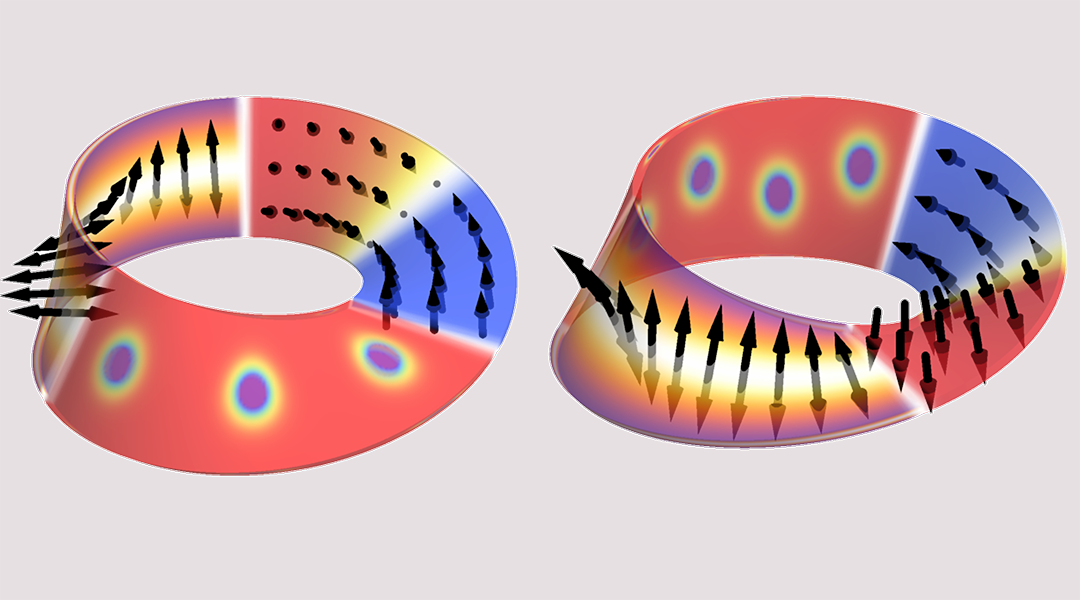It was around 100 years ago when Einstein’s theory of general relativity forever changed our understanding of space and time, ushering in the nuclear age and predicting extraordinary astrophysical phenomena, such as gravitational waves and black holes.
This idea of a curved spacetime and the underlying mathematics, in addition to being foundational to modern astrophysics, extended our understanding of concepts such as the curvature of physical observables and material properties, such as mass, electrical charge, or magnetism, which can be directly measured.
Topology, in particular, is a concept that is used to study how space and by extension, surface properties, are organized. These are mathematical properties that extend as a result of a space’s shape and, in recent years, has extended beyond just the theory of general relativity.
Over the last 10 years, the role of topology and the impact of curvilinear geometry has been explored within a number of differing fields, ranging from solid-state physics to soft-matter physics, chemistry, biology, and mathematics. This has led to incredible developments and new subfields such as curvilinear cell biology, superfluidity, advancements in optics, plasmonics, magnetism, and superconductivity.
Within both the fields of magnetism and superconductivity, this idea is relatively new, but has the potential to precipitate a deeper understanding of these properties on a purely theoretical level. These improved theoretical frameworks would in turn be expected to aid in the searching for targeted materials applications.
If researchers could detect and predict a material’s “geometrical” traits and identify whether they were linked to another property, such as magnetization, they would be able to better design materials with specific attributes — a strategy more effective than the time-consuming trial-and-error methods used in the past to identify new materials.
Despite the importance of acquiring a comprehensive understanding of a material’s properties and physical characteristics, collecting this data and consolidating the available information into a coherent story has been challenging.
“In recent years, there have appeared experimental and theoretical works dealing with curvilinear and three-dimensional superconducting and (anti-)ferromagnetic nano-architectures,” said Oleksandr Dobrovolskiy, head of the SuperSpin Lab at the University of Vienna, in a statement. “However, these studies originate from different scientific communities, resulting in the lack of knowledge transfer between fundamental areas of condensed matter physics as magnetism and superconductivity.”
It was this pursuit that brought together three groups of researchers with expertise in ferromagnetism, antiferromagnetism, and superconductivity. Dobrovolskiy, in collaboration with Denys Makarov at the Helmholtz-Zentrum Dresden-Rossendorf, co-led the efforts to compile data by exploring beyond the boundaries of a single field or research community.
“It is crucial to emphasize open questions and future research directions, which will need to be addressed to bring this research field forward,” they wrote in an email. “The development of curvature effects within condensed matter will require consolidation of the activities of all communities.
“Even for the most distinct topics, [say] magnetism and superconductivity, we were able to find both similarities and differences in the research specific to these topics. It is very important to understand these in order to optimize the development timeline of new research fields. We are currently experiencing this with the rapid onset of active research on curvilinear antiferromagnets, which is benefiting from 10 years of expertise in curvilinear ferromagnetism.”
Recent developments in both fields are already leading to interesting applications. In the context of magnetism, for example, researchers have uncovered “a new toolbox to tailor curvature-induced anisotropy [a property that has a different value when measured in different directions] and chiral responses,” explained Makarov in a statement. “The possibility to tune magnetic responses by designing the geometry of a wire or magnetic thin film is one of the main advantages of the curvilinear magnetism, which has a major impact on physics, material science, and technology.”
Addressing teams working in theory, computational analysis, fabrication, and characterization, the team say that incorporating the concept of curvature in magnetic or superconducting structures into broad research efforts should spark an interest to search for novel device ideas and ultimately think about their technology transfer potential.
Reference: Denys Makarov, et al., New Dimension in Magnetism and Superconductivity: 3D and Curvilinear Nanoarchitectures, Advanced Materials (2021). DOI: 10.1002/adma.202101758

















